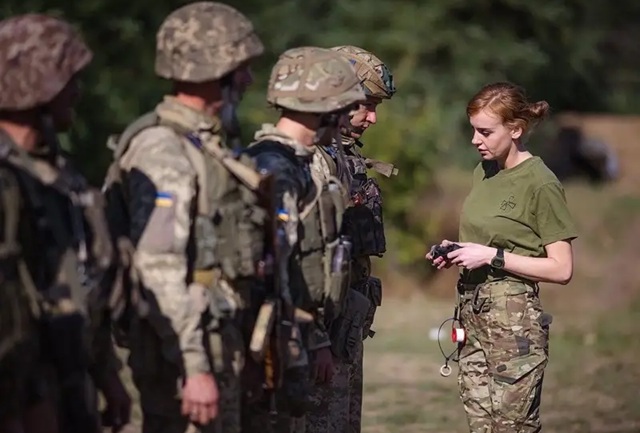In eastern Ukraine near Kramatorsk, Ukrainian intelligence has reported Russian Lancet drones hovering like predators over the battlefield, ready to strike with lethal precision. Medics and soldiers working at the frontlines warn that NATO’s conventional training does not equip forces to face the realities of this new kind of warfare.
Rebekah Maciorowski, an American volunteer paramedic coordinating medical evacuations for a Ukrainian battalion, described the grim reality. “You can’t prepare anyone for a conflict like this. The tactics NATO teaches are for Afghanistan and Iraq, not the Ukraine frontlines,” she told Independent UK. Maciorowski has witnessed drones attacking wounded soldiers and medics, forcing her team to evacuate using quad bikes rather than armored ambulances, which have become prime targets.
Drones and Modern Battlefield Threats
Ukrainian forces report that drones, often equipped with first-person view and guided by fiber-optic cables, have fundamentally changed the battlefield. Frontlines are no longer continuous lines of infantry but scattered zones of observation and attack. Russian forces now strike with long-range glide bombs, target communication lines, and hunt Ukrainian UAV operators in their bunkers.
Oleksandr Yabchanka, commander of a drone unit in the Da Vinci Wolves Battalion, emphasized the urgency. “Russia is adapting fast. It is a colossal threat and very underestimated in Europe,” he said. Ukrainian drone operators and military experts have become critical in shaping tactics for small-unit engagements, but NATO’s doctrine, which emphasizes concentration of forces and combined arms maneuvers, struggles to match these innovations.
Medical Challenges and Casualty Management
Frontline medics face unprecedented challenges. Maciorowski noted that severely injured soldiers may not reach proper medical care for days or even weeks, unlike in previous conflicts such as Afghanistan, where timely evacuation ensured a survival rate of over 99%. “The radius of impact for a drone grenade is massive. You can have an entire group incapacitated in one strike,” she said. Field medics are now training every soldier to provide emergency care, administer intravenous fluids, and treat catastrophic injuries in isolation.
Ed Arnold, a former British Army officer now with the Royal United Services Institute (RUSI), warned that NATO’s capacity to manage mass casualties is severely limited. Britain’s largest mobile field hospital can accommodate only 80 general beds and 10 intensive care patients, far below what would be required in a full-scale Ukraine-style conflict.
NATO Training Gaps
Maciorowski criticized NATO exercises for underestimating the role of drones and modern hybrid warfare. “When I trained with NATO, the factor of drones was not really filtered in. Tactics from previous wars no longer apply. You aren’t making linear assaults anymore,” she explained to Independent UK.
Although 61,000 Ukrainian soldiers have been trained under Operation Interflex in Europe, and 91% reported increased confidence in their survivability, frontline veterans argue that NATO soldiers need first-hand exposure to the realities of drone-intensive, non-linear combat. “We should have Ukrainians training British officers at Sandhurst,” Arnold said. “A resident Ukrainian platoon, rotating regularly, could give NATO the real download on what’s happening on the frontlines.”
Geopolitical Stakes
The stakes are high. Russian President Vladimir Putin has openly threatened the Baltic states and retains ambitions for eastern Europe. NATO forces remain largely trained for outdated scenarios involving massed troops and conventional attacks, while modern warfare emphasizes battlefield transparency, precision strikes, and dispersed operations.
Conclusion:
Frontline reports from Ukraine highlight a stark warning for NATO: current military doctrine and training may be insufficient for confronting a technologically adept and adaptive Russian military. As drone warfare and precision weaponry redefine the battlefield, experts urge immediate adaptation and collaboration with Ukrainian forces to prevent catastrophic losses in any future conflict, Independent UK reports.
